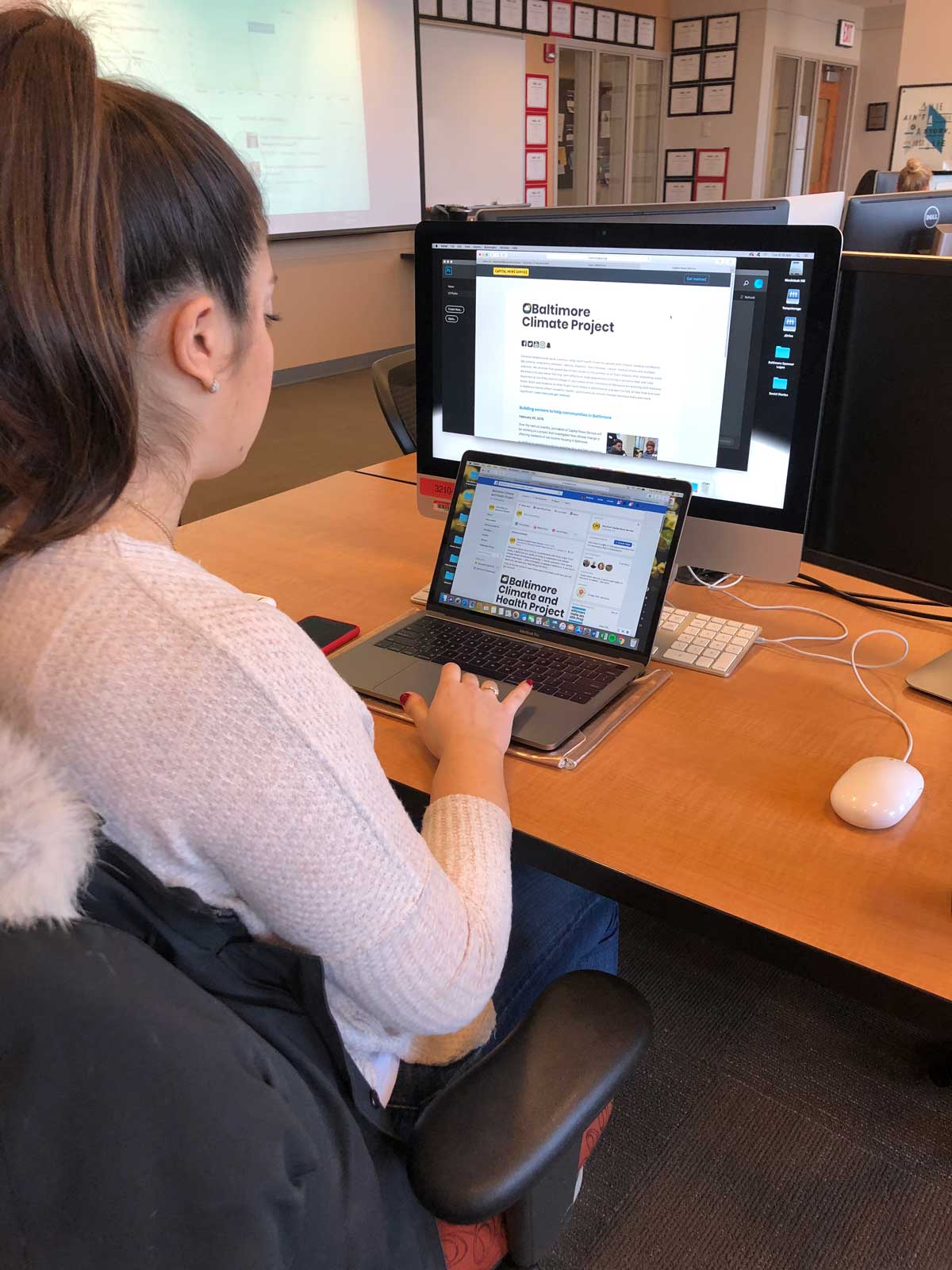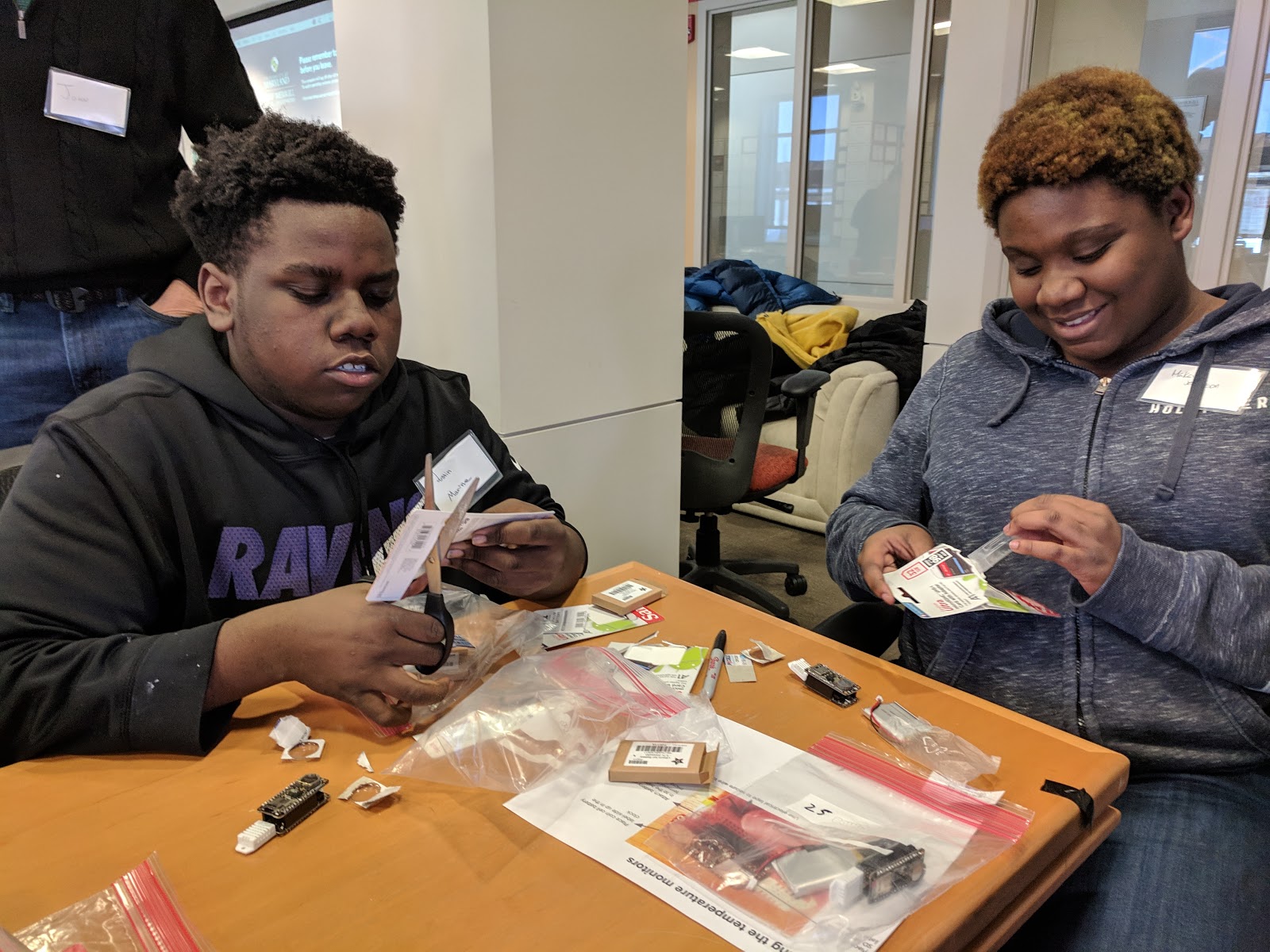Extreme temperatures pose a serious, long-term health threat for people with chronic medical conditions like asthma, respiratory diseases, obesity, diabetes, heart disease, cancer, mental illness and multiple sclerosis. We all know that people die of heat stroke in the summer or of heart attacks after shoveling snow. We know a lot less about the long-term effects on large populations of living in extreme heat and cold. Reporters at the Philip Merrill College of Journalism at the University of Maryland are working with National Public Radio and students at Wide Angle Youth Media in Baltimore on a project to look at how heat and cold in Baltimore homes affect residents' health – particularly as climate change becomes more and more significant. Learn more and get involved.
A broken radiator in the beginning of winter
April 30, 2019
It was the beginning of the winter, and the weather was getting colder. My mother had a friend over and she wanted to keep the house warm, so she turned on the radiator. I decided to go to my room, as I was getting bored and on my way there I noticed the radiator was dripping.Baltimore groups and residents use Twitter to discuss extreme weather
April 16, 2019
Extreme temperatures pose a threat to the health of Baltimore residents. To discuss their concerns, advocates and residents have used social media platforms, like Twitter, to start conversations around the effects of climate change.Baltimore’s Commission on Sustainability says connection between humans’ actions and climate change had “never been stronger”
April 10, 2019
In 2009, Baltimore’s Commission on Sustainability, and the city’s sustainability office, issued a call to action — the connection between humans’ actions and climate change had “never been stronger,” and it was time to figure out what to do about it.“We are facing unprecedented changes in the global climate,” the city’s sustainability plan read, “and there is no time to waste in developing strategies to reduce our greenhouse gas emissions so that future generations will be able to enjoy the same resources we have today.”
It’s hard to learn when classrooms are cold
March 21, 2019

Frigid temperatures in classrooms are a big problem across Baltimore, which has some of the oldest and most rundown school buildings in the state, according to the Baltimore Sun. I decided to interview students and teachers at my school to learn how cold temperatures affect their ability to learn and teach.
A Conversation With Allison Gost Breitenother
March 14, 2019

We’re analyzing data to explain connections between temperature, health and neighborhoods in Baltimore
March 06, 2019

A big part of our effort: exploring whether health, income and other factors may put people in some neighborhoods that are disproportionately affected by the “urban heat island” phenomenon at greater risk than people in other neighborhoods.
Trying to stay warm in Oliver
March 04, 2019
Carolyn Owens woke to find she couldn’t straighten her right arm. Her arthritic elbows and knees hurt in the cold. It was bad during the polar vortex in late January.“It didn’t feel like the heat was on,” she said. But the furnace had been on--it strained in the cold to heat her wide, three-story rowhouse in Baltimore’s Oliver neighborhood. She sat near the vent and wrapped heavy towels around her legs, hoping to keep them from getting too stiff. She wore sweats, two shirts, a jacket and long socks.
Engaging audiences and connecting with communities through social media
February 26, 2019

Throughout the development and reporting process, CNS hopes to engage and connect with audiences and communities that are already interested in this topic. This helps us to better understand the nuances of the topic in addition to building an audience around the project. We hope the ongoing social media engagement leads to greater community involvement and interactivity, where community members will feel motivated to share the project with their online networks.
Building sensors to help communities in Baltimore
February 20, 2019

Over the next six months, journalists at Capital News Service will be working on a project that investigates how climate change is affecting residents of low income housing in Baltimore.
In addition to examining publicly available data and field reporting with residents, the CNS team will place temperature monitors in the homes of Baltimore residents. These monitors will quantify the potentially harsh temperatures that residents endure during the hottest and coldest times of the summer and winter. In total, the team has built 40 temperature monitors and will place three sensors in the homes of Baltimore residents who agree to participate. We hope to work with residents in the future to build more.
Dr. Sacoby Wilson speaks at Environmental justice event
February 14, 2019
The effects of climate change will hit low-income, politically marginalized groups and minorities the hardest, driving economic and health inequality, Sacoby Wilson, a public health professor at the University of Maryland, told lawmakers Wednesday afternoon at environmental justice event.Extreme heat and cold: CNS is reporting on climate and health
February 11, 2019
For many people, the recent polar vortex was simply an inconvenience. But others were at risk. In Baltimore’s rowhouses and poorly maintained old homes, extreme cold or heat over time can sicken or kill the very young, the fragile elderly and people of any age with chronic diseases such as diabetes, high blood pressure and heart or lung problems. And as climate change alters temperature patterns, public health officials predict a growing problem.




